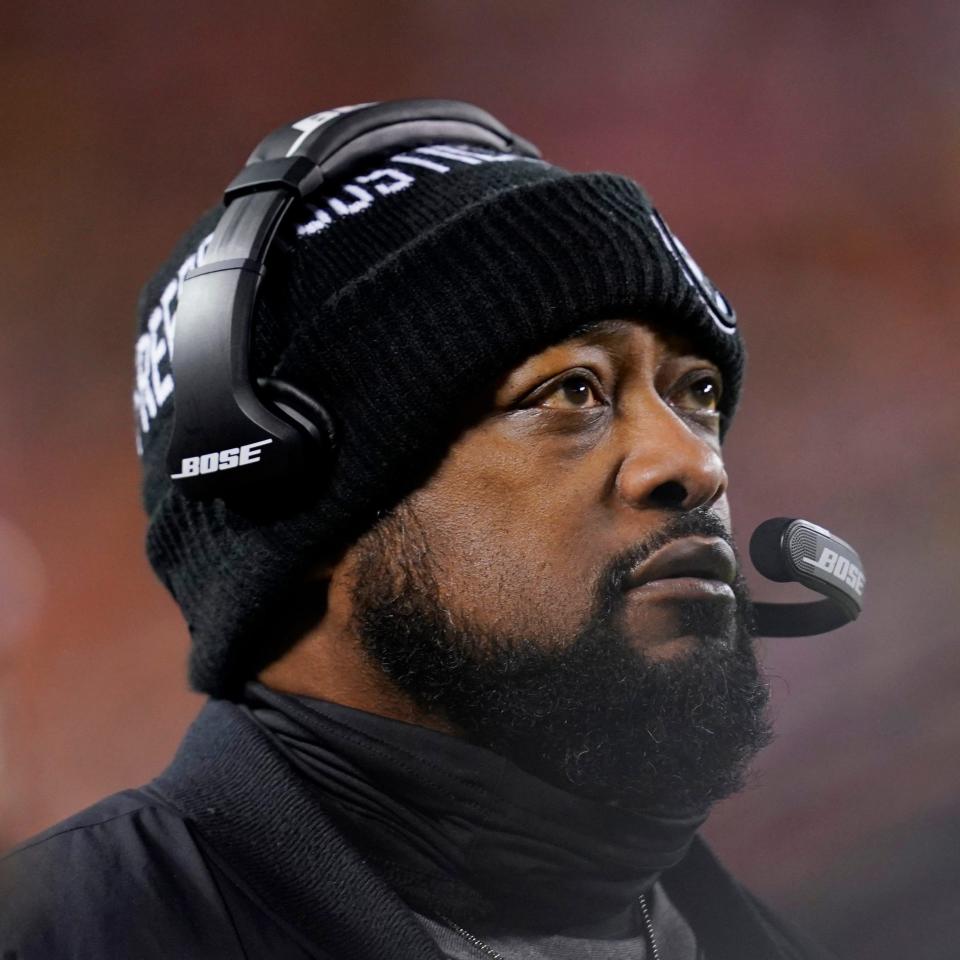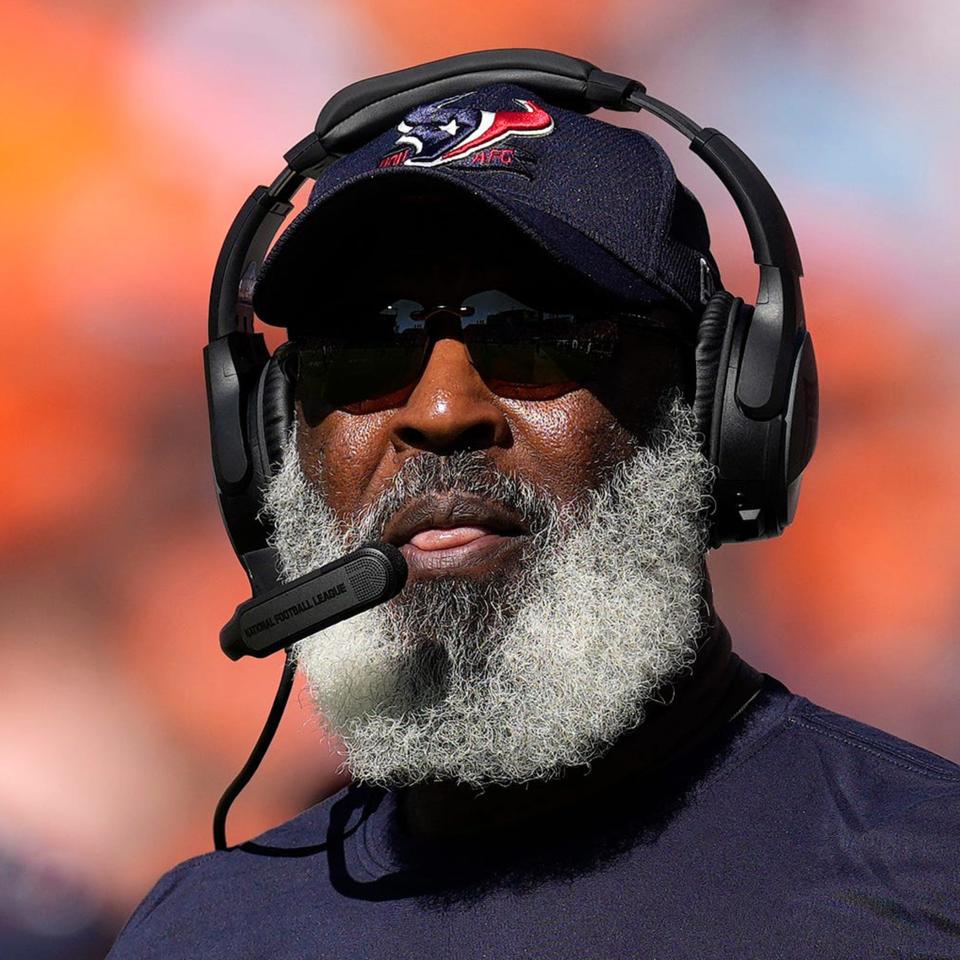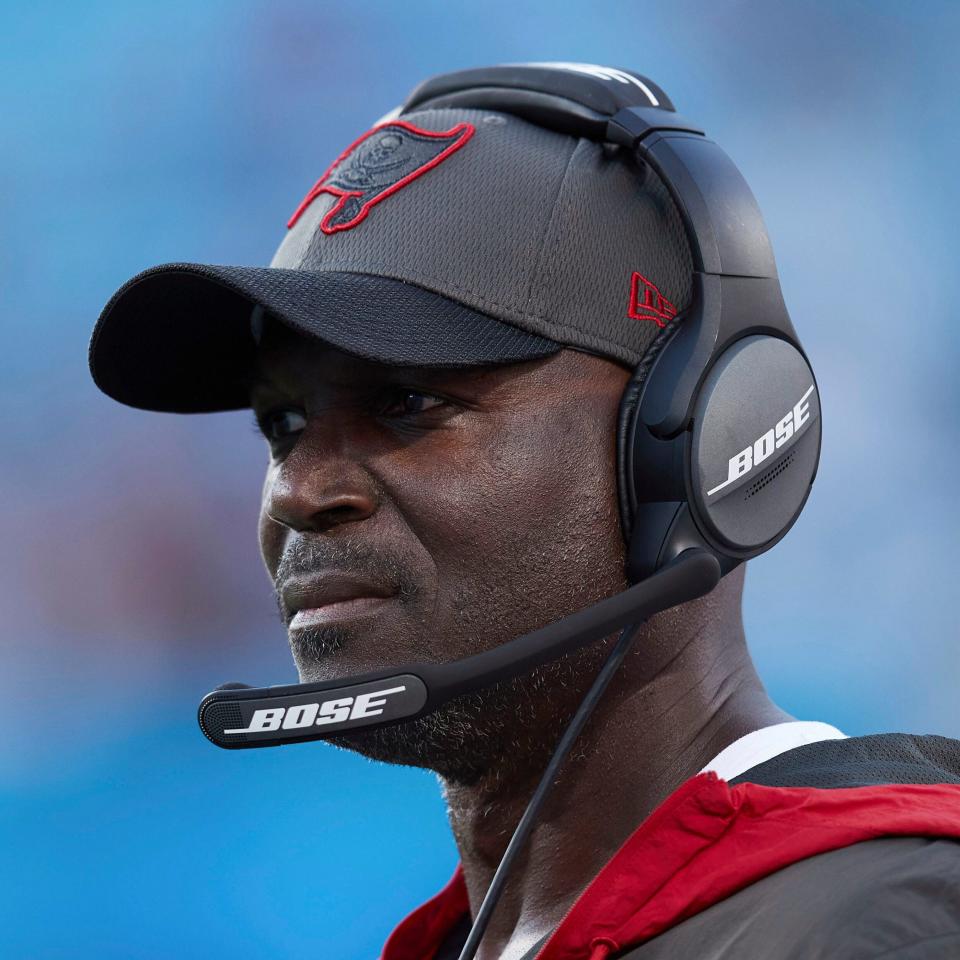What we learned: Four key findings from USA TODAY's analysis of NFL coaches
In 2003, the NFL implemented the Rooney Rule with hopes of increasing diversity among its coaching ranks.
Now, almost two decades later, is the league seeing signs of progress?
In an effort to help answer that question and others, USA TODAY Sports compiled a wide range of data on each of the 722 on-field coaches in the league at the start of this season — including information such as age, race, gender, family ties, playing experience and career paths.
The data provides a snapshot of where the league stands and illustrates that, while more coaches of color are entering the league, some of the NFL's longstanding issues remain.
Here’s a look at four key findings from USA TODAY Sports’ analysis.
Progress, but gaps
Using team and league media guides and web sites, USA TODAY Sports compiled information on every on-field coach in the NFL this year — from the top of the coaching ladder (head coaches) to the bottom (quality control coaches and fellows).
The data excludes strength and conditioning coaches, analysts and research staffers who do not also assist with on-field coaching, administrative assistants and part-time interns or fellows.
Of these 722 on-field coaches, 43.5% identify as coaches of color, which indicates the continuation of an upward trend that’s been identified by NFL-provided data in recent years. The number of non-white coaches in the league (314) is believed to be the largest in NFL history.
That’s not to say every team’s staff is growing more diverse, however.
In terms of non-white coaches on staff, there is a difference of nearly 40 percentage points between the most diverse team in the NFL (the Pittsburgh Steelers, with 63% of coaches identifying as non-white) and the least diverse (the Cincinnati Bengals, with 24%).
Led by head coach Mike Tomlin, who is Black, Pittsburgh has a staff that comes closest to reflecting the racial makeup of players, whom are about 70% non-white. Cincinnati’s coaching staff, meanwhile, more closely resembles a staff of NFL eras past; white coaches there outnumber coaches of color 3-to-1.
In response to a request for comment, a Bengals spokeswoman said USA TODAY Sports' data "reflects a snapshot in time and does not represent the full picture."
"The organization and its founders have a long-standing history of supporting diversity in the NFL dating back to 1946 when (founder) Paul Brown signed Marion Motley and Bill Willis, breaking pro football’s color barrier," the spokeswoman said.
Head coaches of color leading the way
Only six of the NFL’s 32 teams have non-white head coaches. And in a majority-Black league, only three of those head coaches — Houston’s Lovie Smith, Tampa Bay’s Todd Bowles and Tomlin — are Black.
The other non-white head coaches are Miami’s Mike McDaniel (biracial), Washington’s Ron Rivera (Latino) and Robert Saleh of the New York Jets (Lebanese American).



It may come as no surprise that the teams with diverse leaders also have the most diversity throughout their staffs. The Steelers, Texans and Jets have the three highest percentages of non-white coaches in the league this season, while the Buccaneers are the only team with coaches of color in all of their coordinator positions.
In total, those six teams’ staffs are a combined 53% non-white. The rest of the league's staffs are a combined 41% non-white.
"It’s a club, which means that people act on emotion and who they want to be in the room with," said Pamela Newkirk, a professor at New York University and author of Diversity Inc.: The Failed Promise of a Billion-Dollar Business. "Who do they want to play golf with? Who do they want to have a drink with?
"When it comes to leadership, that’s what we see reflected. It’s not women and it’s often not people of color."
A clogged pipeline?
The NFL has spoken repeatedly in recent years about helping more diverse candidates enter the talent pipeline, with hopes they will be promoted through the ranks.
But USA TODAY Sports found little evidence of such movement, at least not yet.
At the assistant position coach and quality control coach levels, specifically, 48% of coaches identify as non-white — including just 42% on the offensive side of the ball. But that percentage steadily decreases on the way up the coaching ladder.
Only 30% of coordinators in the NFL this season are non-white, for example, including just 14% of offensive coordinators. Nine teams have all white coordinators.
"If we haven't been able to make substantial progress in those areas, then we really haven't made a great deal of progress at all," Fritz Pollard Alliance executive director Rod Graves said, while also referring to roles like general manager and team president.
"It really has to be on the opportunities to grow and to expand into the leadership roles and participate in the vision and strategic elements of running the game as a business."
NFL senior vice president and chief diversity and inclusion officer Jonathan Beane said the league is proud of the diverse coaches within its ranks but also cognizant of the issues. It's one of the reasons why the league mandated this season that teams hire a coach of color or woman as an offensive assistant.
"We have incredible coaches in the league already. There's no pipeline issue at all," Beane said. "But one thing we do know is when we look at offensive coordinator, when we look at QB coach and other coaches on the offensive side, we do not have the diversity that we should have. It is not nearly as strong as it is on the defensive side."
Positional disparities
USA TODAY Sports also found non-white position coaches, especially on the offensive side of the ball, are concentrated in a handful of roles that rarely come with promotion opportunities.
Of the 73 offensive position coaches who identify as non-white, 52 — or 70% of them —coach either running backs or wide receivers. Only six work with quarterbacks, and three with the offensive line.
This is significant because the latter two positions more often serve as feeders to the coordinator level, which is of course all but a prerequisite to becoming a head coach.
"This is unfortunately part of our league’s history," Hall of Fame coach Tony Dungy said. "It’s not solely that Black coaches were kept from head coaching positions. It’s that, in some cases, we were prevented from (taking) the pathways towards advancement."
The disparities continue at the assistant position coach and quality control level, too. USA TODAY Sports found that 91% of NFL coaches who work with the running backs, at any level, are non-white, compared to only 24% of coaches who work with quarterbacks.
Contributing: Nancy Armour, Steve Berkowitz and Mike Freeman
Contact Tom Schad at tschad@usatoday.com or on Twitter @Tom_Schad.
This article originally appeared on USA TODAY: USA TODAY's analysis of NFL coaches: Four key findings

